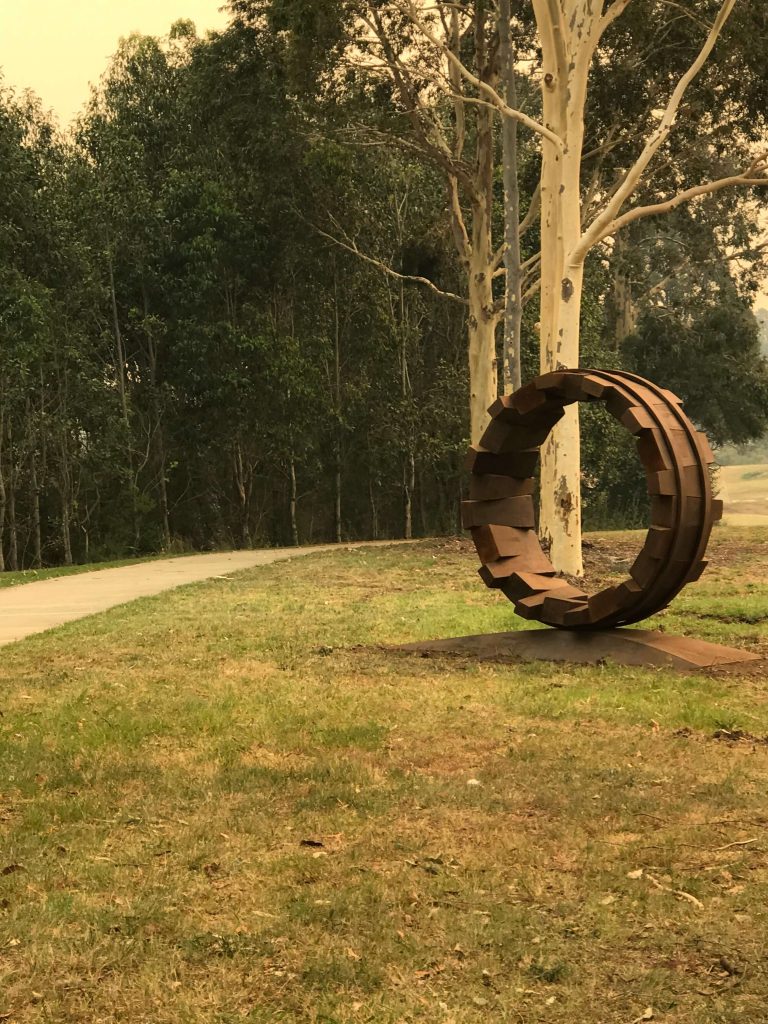Inspired by Sculpture by the Sea, Liverpool Sculpture Walk brings public art to Sydney’s South West. The walk takes place alongside the Georges River, beginning at the Casula Powerhouse Art Centre continuing along 20-hectares of riverside parkland.
The walk opened in December 2019 and continues until 31st August 2020— extending on the limitations of the two-week original — featuring ten artists who engage with the aspects of Australian nature, climate change, Aboriginal culture, astronomy, and their relationship to synthetic materials.

Liverpool City Council worked directly with the Sculpture by the Sea team to bring the artists to one of Sydney’s fastest-growing suburbs. “Art should be accessible to everyone, and the Liverpool Sculpture Walk along the Georges River is a very attractive setting for such a significant display of quality public art,” says David Handley, Founding Director of Sculpture by the Sea. By changing the location, not only does it bring people together in the area but offers a new lens to view the sculptures.
In the traditional home, the artworks are offset by the rugged coastline and sweeping ocean. However, in Liverpool, the sculptures look crisp against the urban and bush landscape. At times, the mirrored sculptures offer a reflection on their surroundings on the other side of Sydney — however, they all consider the same Australia environment.
David Ball invites the viewer to look up to the sky against the frail architecture of Corten steel in Celest. In the same consideration, Nadia Odlum uses steel, concrete and two-way mirrored glass, in This present moment, the Moving World; the artwork changes depending on the location of the sun. In both artworks, light and time amplify the audience’s sense of perception.

Similarly, along the walk is Naomi Taylor Royds’ Red Gum sculpture, which embodies the eucalypts of Australia as a reminder to appreciate the commonplace and the ordinary. SA-based artist Greg Jones also welcomes interpretation of the stark sunburnt country, the brutalist sculptures engaging the environment in a contrast between life and stillness.
Liverpool City Council said that 98.6% of residents appreciate art in the community with sculptures and murals being the most desired. Outdoor public art generally removes the stigma of contemporary art; it’s accessible to most and eliminates the awkward gallery context. And as these sculptures engage with nature, they also provide a way for the community to spend time outdoors with art in the newly opened Casula Parklands.